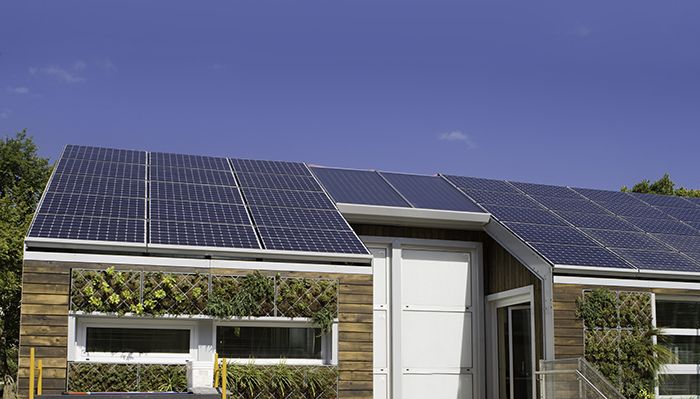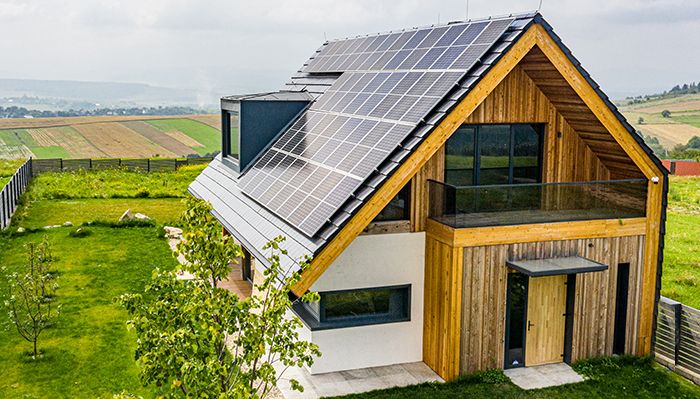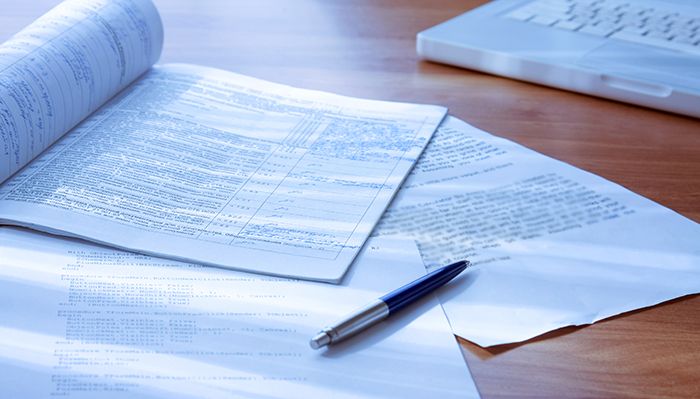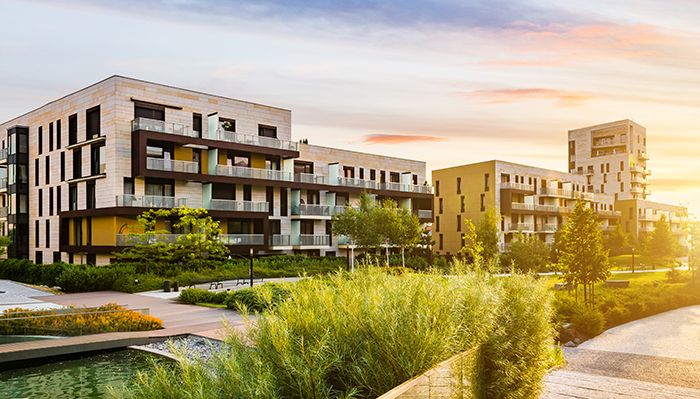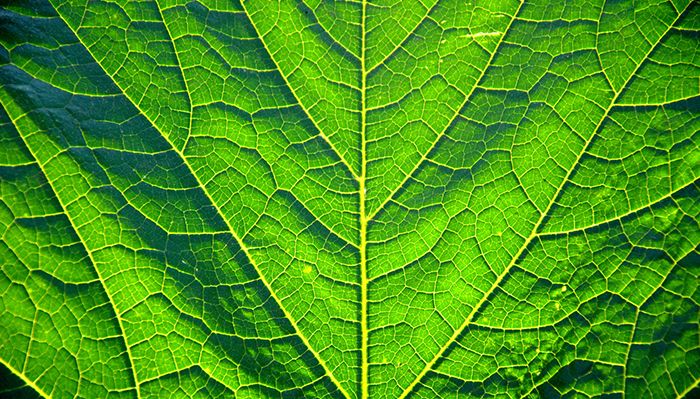11 E Lenox Multifamily Building in Boston, MA
The first ground-up Mass Timber project in the City of Boston, this project is Passive House (PHIUS) certified.
Meet criteria for sustainable building programs and high-performance standards
No matter which sustainable building programs or high-performance standards you’re striving for, our lineup of proven, compatible solutions is designed and tested to work together – helping you achieve optimum thermal, water and air protection for the entire building envelope.
Our solutions enable sustainable, high-performance, energy-efficient construction for all types of residential single-family, residential multifamily and commercial buildings – including both new construction and retrofits.
LEED (Leadership in Energy and Environmental Design) is a widely used green-building rating system. LEED provides a framework for healthy, efficient, carbon-saving and cost-saving green buildings.
Developed by the U.S. Green Building Council (USGBC), the LEED certification process evaluates projects and issues credits based on criteria including carbon, energy, water, waste, transportation, materials, health and indoor environmental quality, resulting in a LEED classification level of Certified, Silver, Gold or Platinum.
According to the USGBC, LEED certification provides a range of benefits:
Zero net energy (ZNE) programs, also known as zero energy or net zero energy programs, are for buildings designed to produce as much energy through renewable sources as they use over the course of a specified time period. Over time, ZNE construction techniques ideally can reduce both energy use costs and net emissions to near zero.
Achieving ZNE requires a complex mix of sustainable building technologies and techniques, renewable energy sources, and energy use planning.
https://www.energy.gov/eere/buildings/zero-energy-buildings-resource-hub
https://gettingtozeroforum.org/
The Passive House standard is used primarily in residential single-family and multifamily projects to yield energy efficiency benefits originating from passive design strategies and high-performance installation techniques. The standard is built on a set of five principles that ensure stable temperatures, comfortable indoor air, reduction of noise and minimal energy use:
Learn more about this standard by visiting the Passive House Institute of the U.S. or the Passive House Network.
The first residential green building standard to receive approval from the American National Standards Institute (ANSI), the ICC 700 National Green Building Standard® (NGBS) has been implemented widely in recent years. The standard provides architects, builders and developers with a flexible above-code program to design and construct homes and buildings that are sustainable, cost-effective and geographically appropriate.
NGBS provides four certification levels to meet market and regional needs, all of which require meeting minimum thresholds across all categories to ensure a well-balanced implementation:
The U.S. government’s ENERGY STAR program – commonly known for tax rebates for certified products independently certified to save energy, save money and protect the environment – also provides building certifications with potential tax deductions for builders and tax credits for commercial buildings.
To be certified as ENERGY STAR, a building must meet strict energy performance standards set by the U.S. Environmental Protection Agency (EPA). Annual third-party verification is required for continued certification. A building must earn an ENERGY STAR score of 75 or higher; indicating performance exceeding that of at least 75 percent of similar buildings nationwide.
https://www.energystar.gov/buildings/building_recognition/building_certification
BREEAM (Building Research Establishment Environmental Assessment Method) is a method of assessing, rating and certifying the sustainability of buildings.
Unlike many certifications, buildings can be assessed and certified by BREEAM during any stage of their life cycle, from design and construction through operation and occupancy. BREEAM considers factors in multiple categories, including ecology, energy and water use, internal environment (health and well-being), management processes, materials, pollution, transport, and waste.
The Living Building Challenge (LBC) focuses on place, water, energy, materials, equity, beauty, and health and happiness as its seven performance areas.
Living buildings:
UL products that have achieved GREENGUARD Certification – including building materials –meet some of the world’s most rigorous third-party chemical emissions standards. GREENGUARD Certification criteria have been the basis for the LEED credit for low-emitting furniture since 2002.
https://www.ul.com/resources/ul-greenguard-certification-program
The Residential Energy Services Network (RESNET) Home Energy Rating System
(HERS) Index is a nationally recognized system for inspecting and calculating the
energy performance and energy efficiency of a home. Assessed by comparing
against a “reference home,” HERS scores are relative to the size, shape and type of
house, with low numbers indicating more energy-efficient homes. A typical home
built to 2006 energy efficiency standards scores 100 on the RESNET HERS Index.
https://www.hersindex.com/hers-index/what-is-the-hers-index/
Whether pursuing a defined certification program or seeking products that contribute to your high-performance sustainability aspirations, DuPont Performance Building Solutions has the products you need. Whether used separately or together – or even in conjunction with other building materials – the powerhouse DuPont product portfolio provides options to deliver thermal, water and air protection for all six sides of the building envelope
• Consistent R-value performance over time and temperature range
• Easy-to-install, lightweight materials
• Technology backed by industry-leading building science
• Trusted technical support and an expansive documentation and installation knowledge base
Simplify specification and design of building enclosures with five elements in one: Structural sheathing, fire resistance, air barrier, water-resistive barrier, and a high-performance continuous insulation layer.
Meet your largest building challenges – both outside and inside the wall – with robust ISO insulation and R-value that’s proven consistent over time and temperature range.
Offering proven thermal and moisture performance, the “original XPS” is durable; easy to install; and available in many sizes, cuts, edge treatments and compression strengths.
With superior water drainage and proven air and moisture management, plus 270 days of UV protection, ensuring an energy-efficient, resilient building is all wrapped up.
The robust product line is designed to help you reach every nook and cranny for easy-to-install superior air and moisture management.
Ensure energy efficiency, durability and comfort with proper sealing, adhesion and compatibility between building elements to eliminate air and moisture penetration and maintain continuous protection.
Lower-embodied-carbon, safer-by-design products
Not only are our solutions designed to help build houses and buildings that save energy, improve air quality and reduce noise pollution, but we’re also committed to transitioning to safer-by-design “green chemistry” and reducing the embodied carbon within our products.
Learn more about our low-GWP DuPont™ Styrofoam™ Brand Extruded Polystyrene (XPS) Insulation
Learn more about our new polyisocyanurate DuPont™ Thermax™ Brand Non-Halogen (NH) Insulation Series
100% of the electricity used to make our products in North America comes from renewable energy sources*
Explore DuPont’s 2030 Sustainability Goals
*We have purchased Renewable Energy Credits to offset our electricity usage since 2016 for select brands. Since 2020, we have offset our full in-house manufacturing electricity usage for brands in North America.

